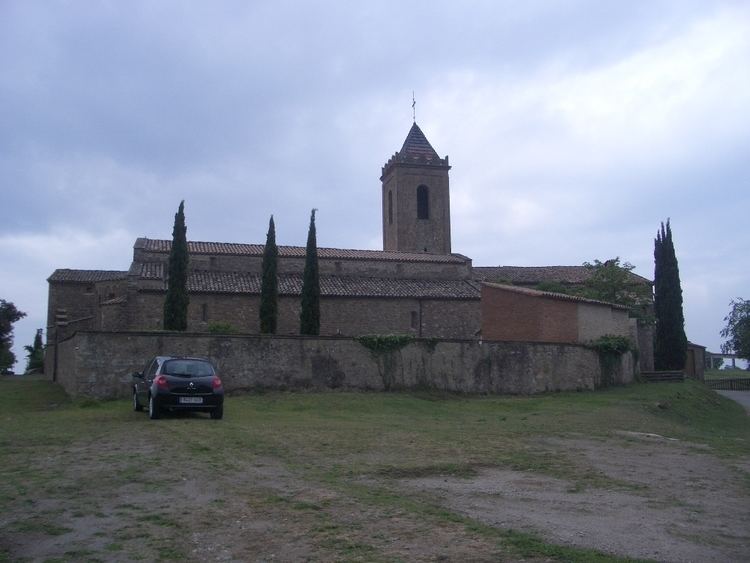Comarca Berguedà Website www.sagas.cat Area 44.94 km² Population 149 (2014) | Demonym(s) Saganès Elevation 738 m Local time Tuesday 4:34 AM | |
 | ||
Weather 5°C, Wind N at 6 km/h, 79% Humidity | ||
Sagàs is a small town and municipality located in Catalonia, in the comarca of Berguedà. It is located in the geographical area of the pre-Pyrenees.
Contents
Map of Sag%C3%A0s, 08517, Barcelona, Spain
Population
Sagàs is essentially a collection of farmhouses, or masies, separated by low wooded ridges and cultivated fields. The municipality is made up of five separate villages (Sant Andreu de Sagàs, El Carrer de Bonaire, Biure de Berguedà, La Guàrdia de Sagàs, and Valloriola) and two parishes (Sant Andreu de Sagàs and Santa Maria de la Guàrdia). Traditionally, the people of Sagàs made their living from agriculture. While this is still true for most of the inhabitants of Sagàs, the increased mechanization of farming has led to a growth in rural tourism, as well as a drop in population—the town has a growth rate of negative 10.4 percent.
Coat of Arms
Although Sagàs has no coat of arms officially recognized by the Generalitat de Catalunya, the town hall traditionally uses a yellow (for heraldic gold) shield bearing a purple saltire cross with a palm of martyrdom, representing Saint Andrew (or, a saltire couped purpure, overall a palm frond, proper).
Celebrations
The festa major or "town festival" is held on November 30, the feast of the town's patron saint, St. Andrew. The parish of La Guàrdia de Sagàs holds its own celebration on the first Sunday in October, and the town hall often organizes a sopar de germanor, or "community supper", on or around October 16, the feast of Saint Gaudericus (Sant Galderic in Catalan), the patron saint of Catalan farmers.
Main sights
History
Before the arrival of the Romans, Sagàs was inhabited by the Bergistani, an Iberian tribe. In book XXXIV of Ab Urbe Condita, Livy refers to Segestica, "an important and opulent city" ("Segesticam [...] grauem atque opulentam ciuitatem"), which most likely corresponds to Sagàs. According to Livy, Cato the Elder ordered that the walls of all Iberian towns between the Ebro river and the Pyrenees be dismantled in order to avoid further uprisings. Only Segestica resisted, and had to be "reduced by works and engines". The importance of this city in ancient times may explain the large number of pre-Latin place names (la Quar, Olvan, Merlès) found in the area directly around Sagàs.
In Medieval times, the first written reference to Sagàs appears in a document from 903, describing the consecration of the Church of Sant Andreu by the Bishop of Urgell at the request of the locals, who built the church, and a priest named Galindó. The church is described as being "in territorio Bergitanensi in locum vocitatum Sagasse" (In Bergan territory, at a place called Sagasse). The current church of Sant Andreu was built somewhat later, on the same site as the original church. Little remains of the original structure, but thirteen graves, the remnants of the original church's cemetery, have been unearthed inside the nave of the current church.
Though Sagàs originally was part of the County of Osona, in the 10th century it became part of the Berga, which was later incorporated into the Cerdanya. The Monastery of Sant Pere de la Portella (in the neighbouring municipality of La Quar) acquired much of Sagàs during the 11th century. For much of the Middle Ages, the town was ruled by the Barons of la Portella, though it eventually became part of the Barony of Pinós.
It seems Sagàs has always been a farming town, with little strategic importance, although a small castle (about three metres by six metres at the base) was built there between the tenth and twelfth centuries.
In 1994, Sagàs was ravaged by wildfires that burnt much of the comarques of Berguedà and Bages; much of the forest that once characterized the town was lost, and the town's farms were dealt a serious blow.
